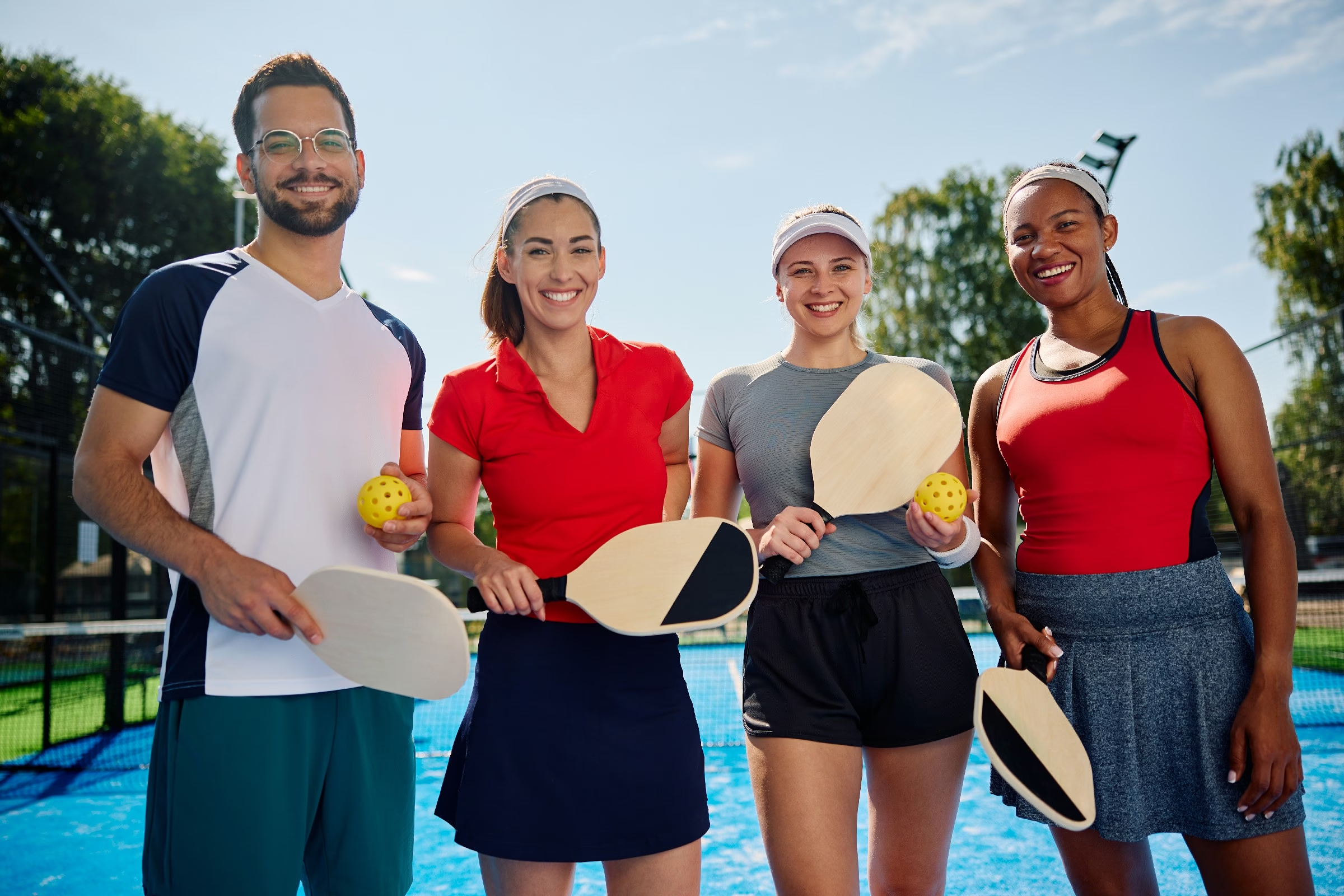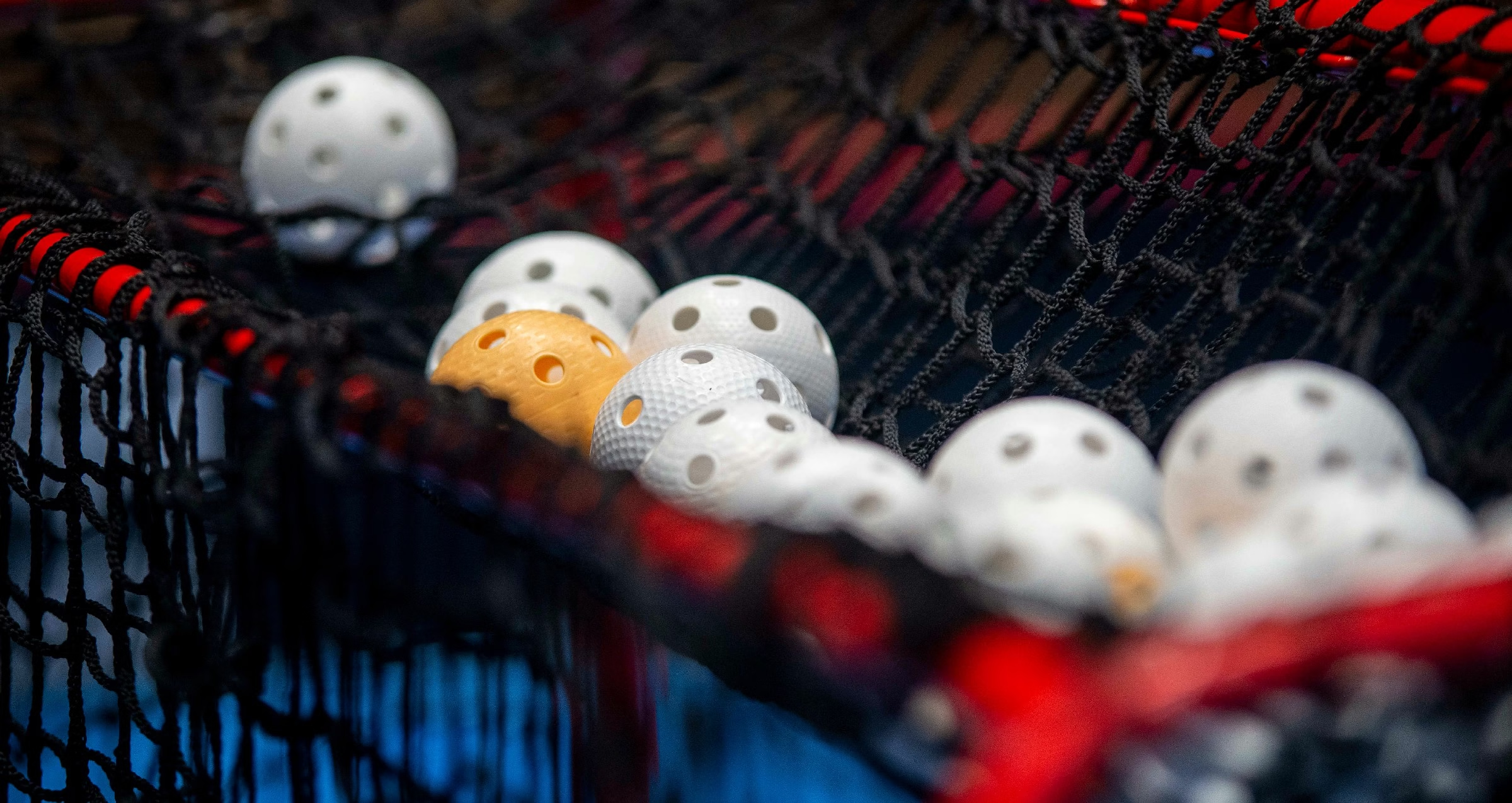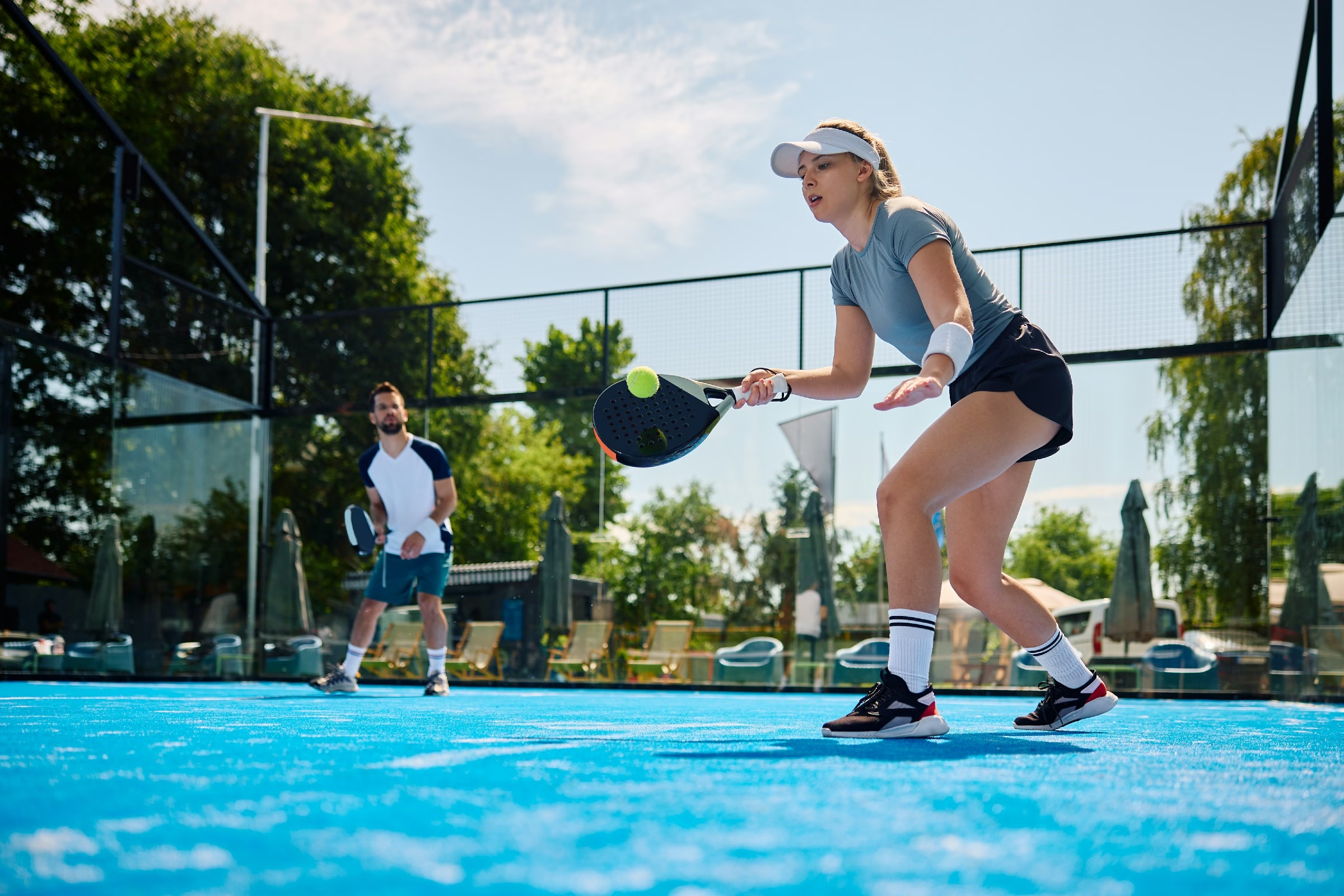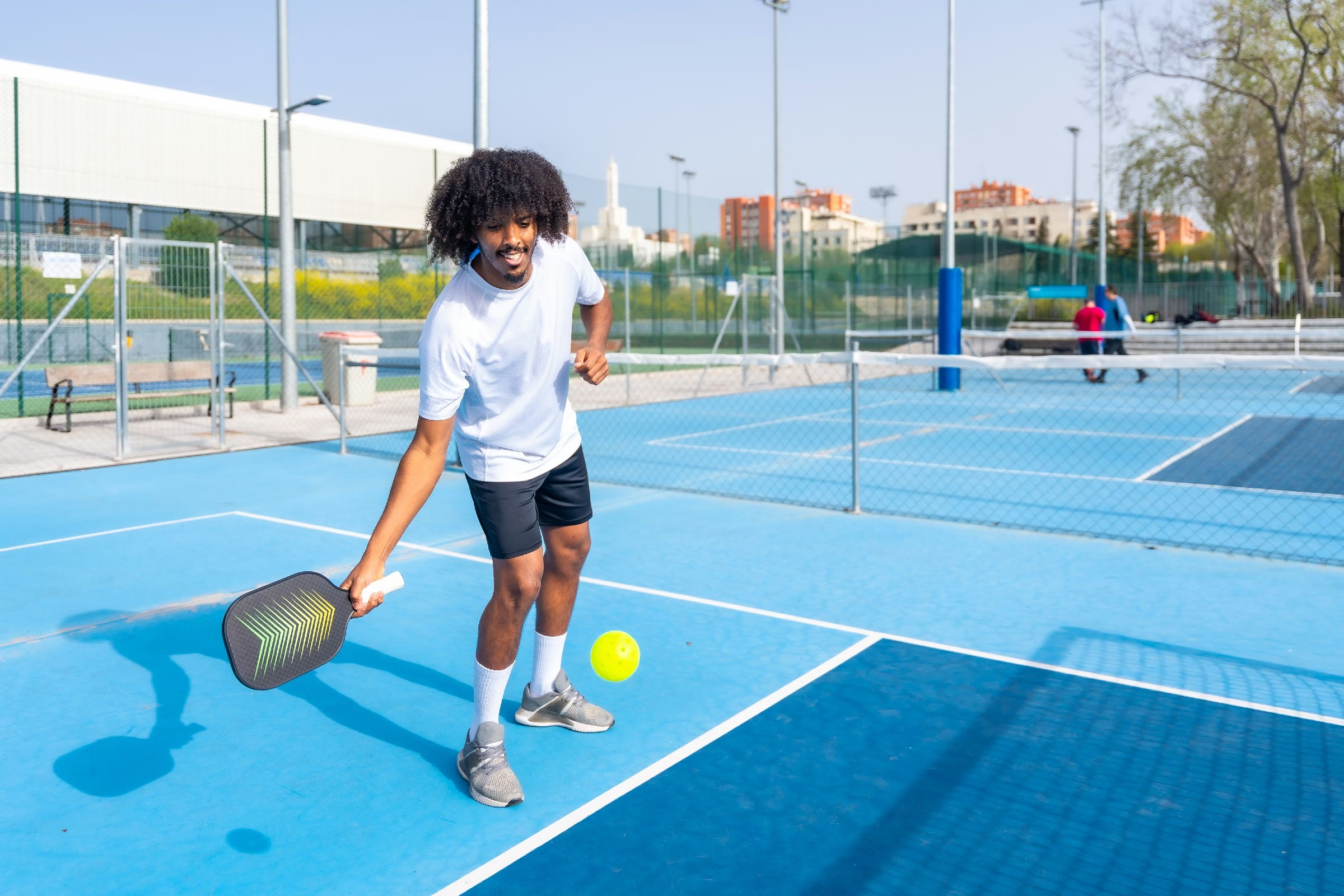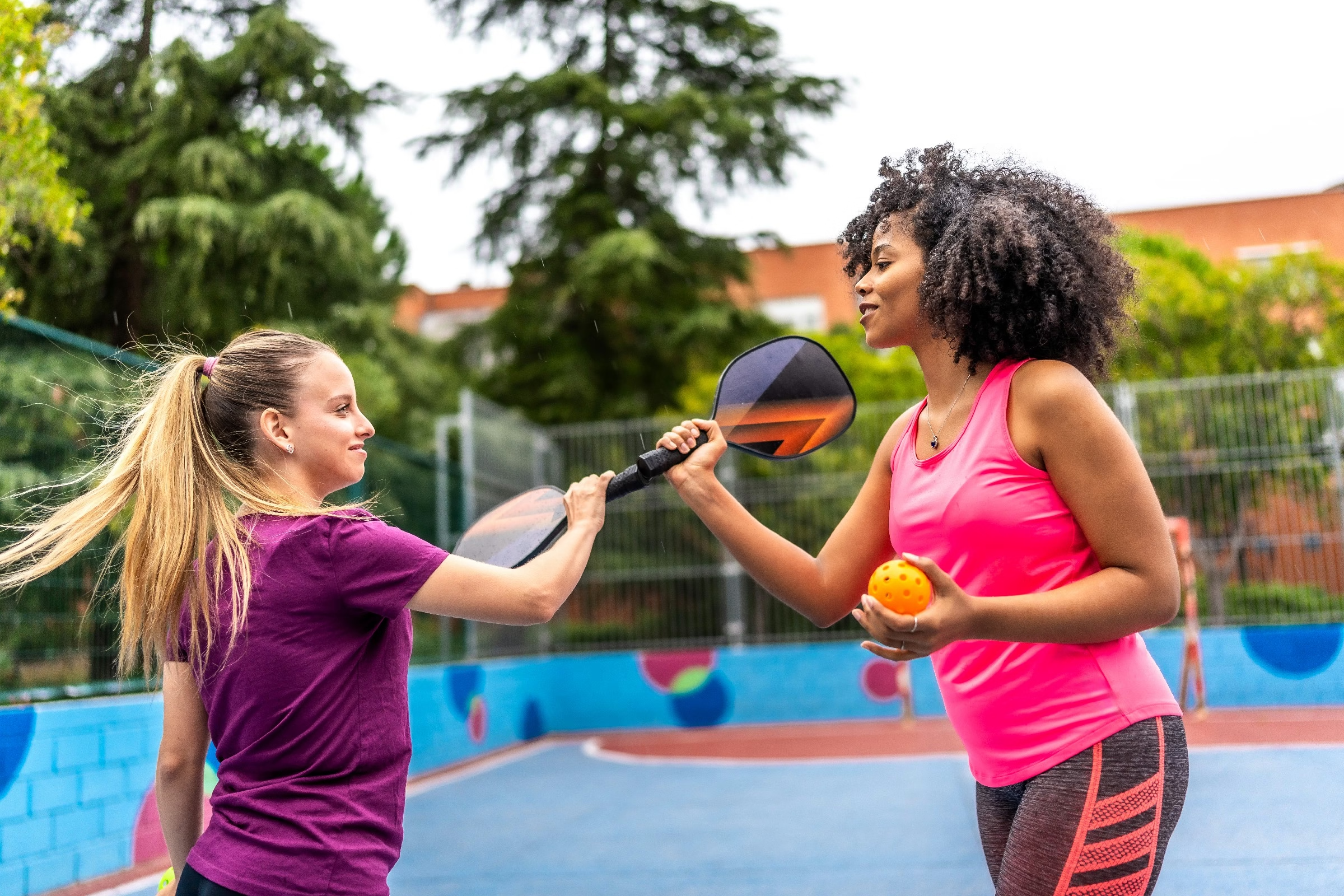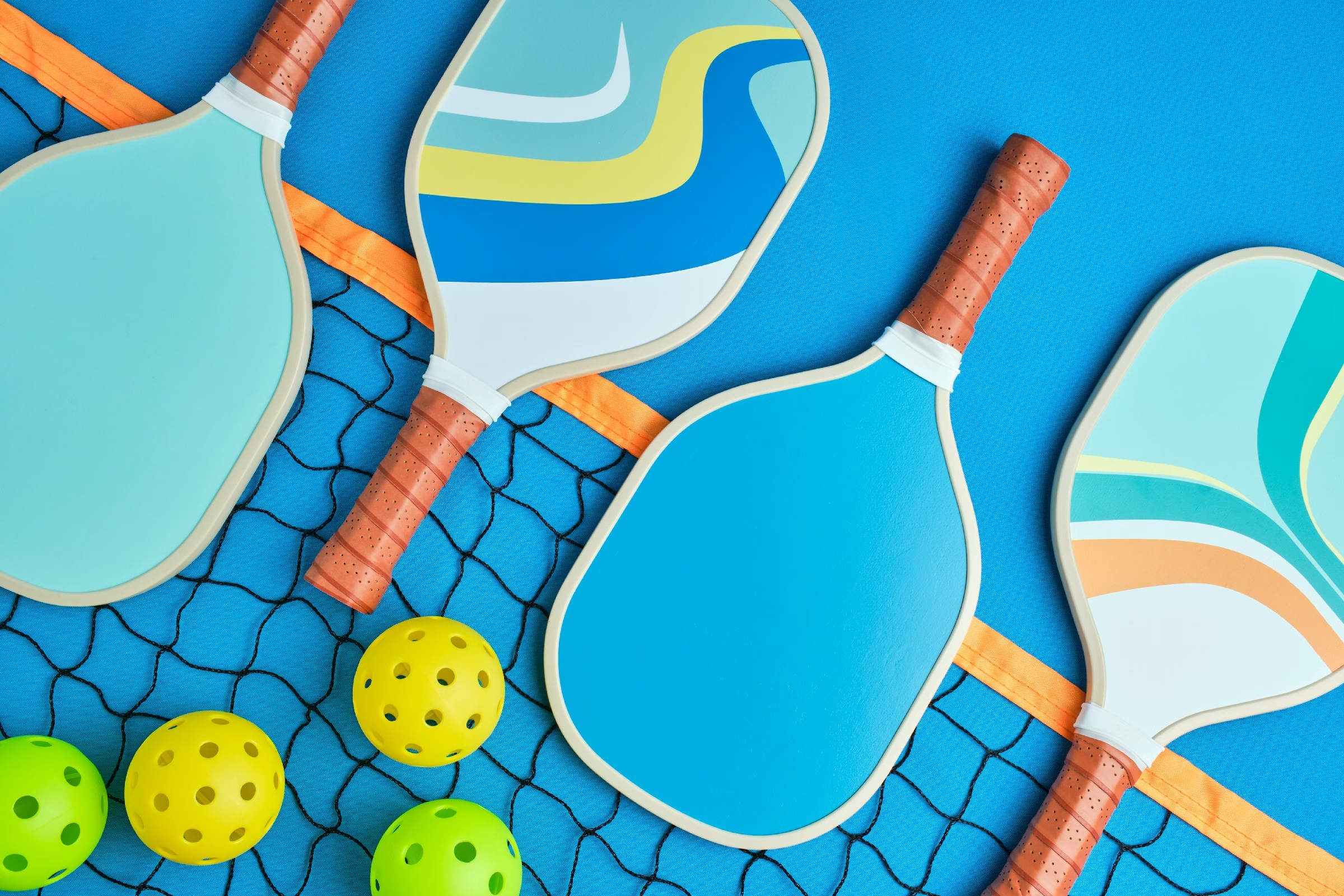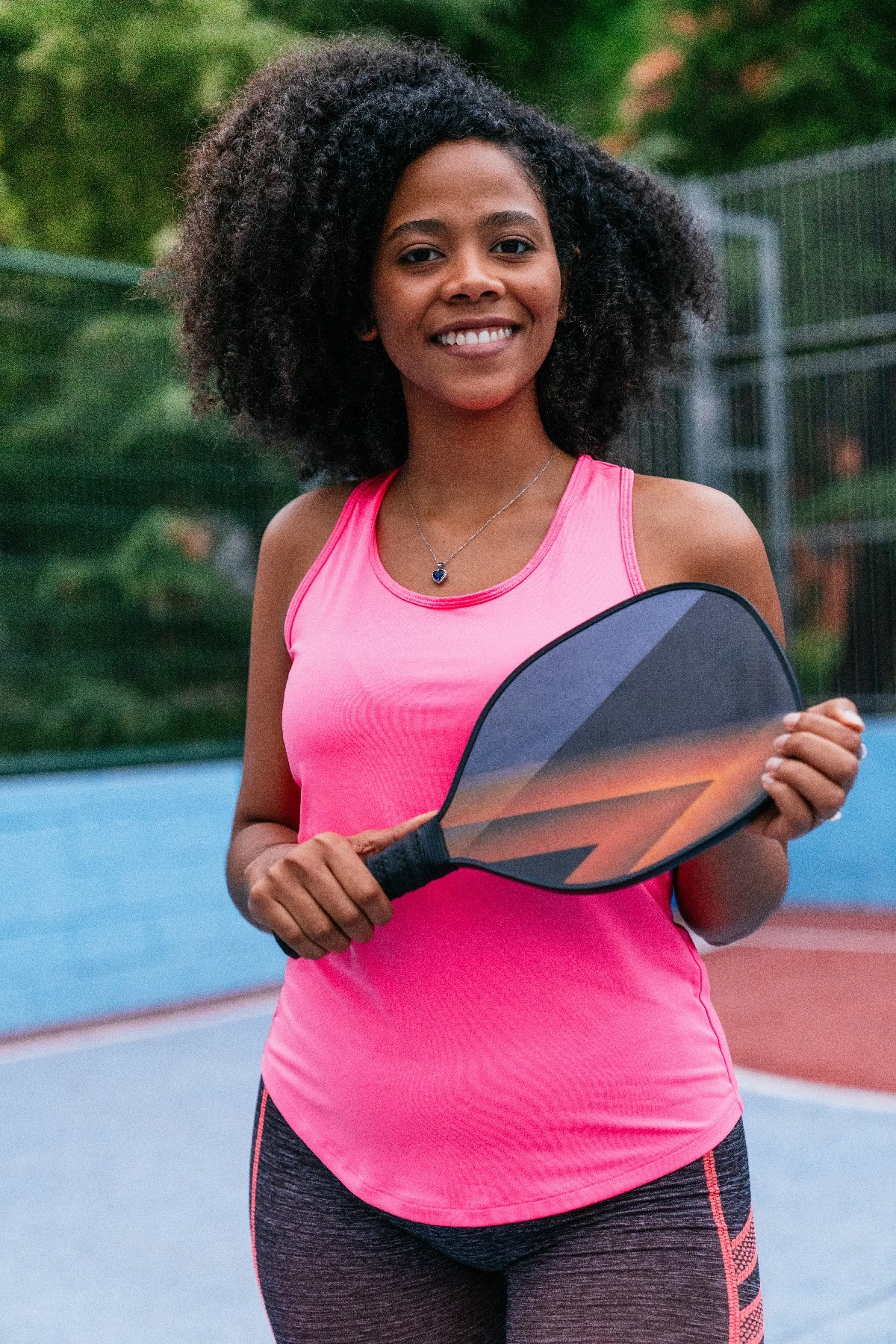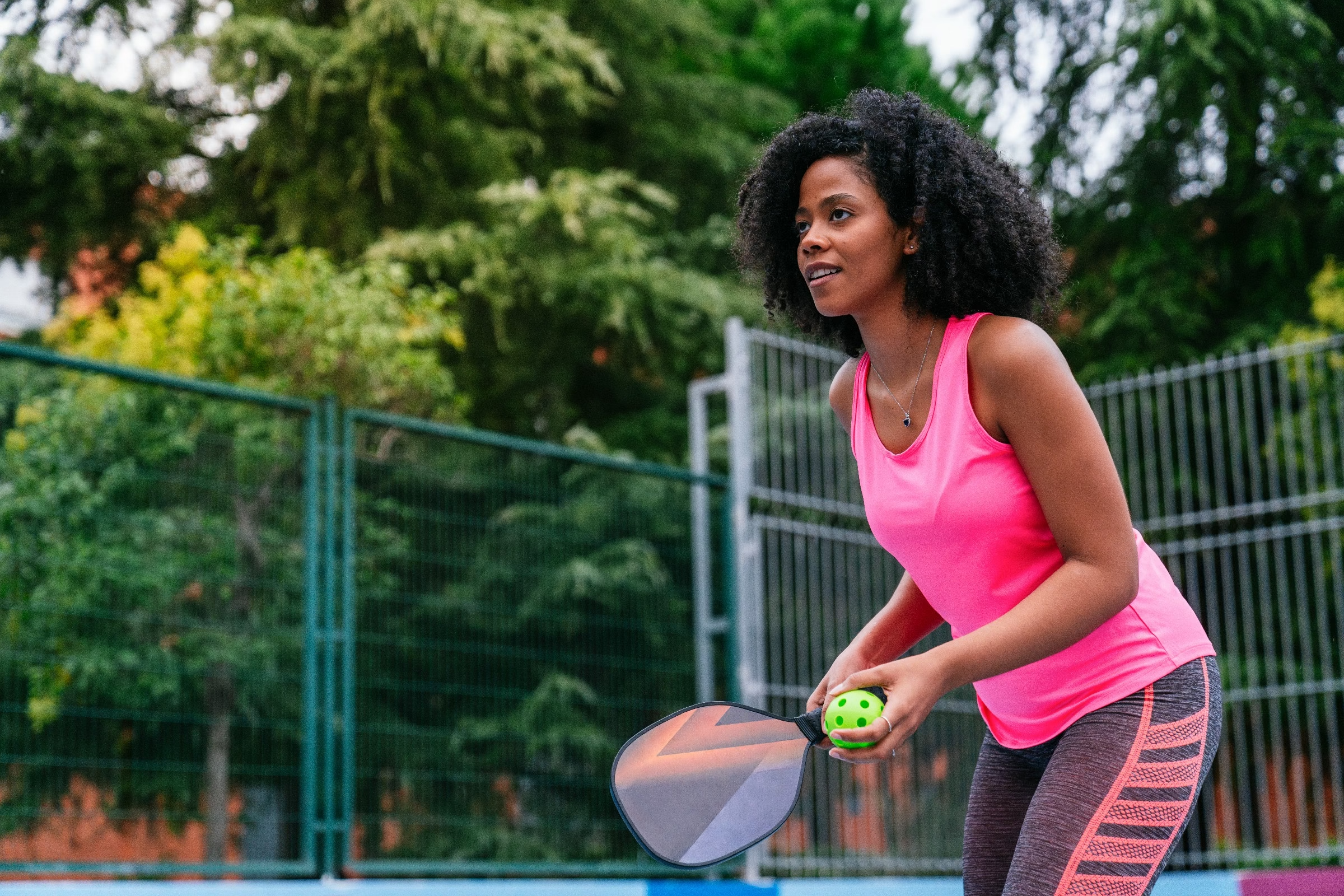Blog
is there really a difference in pickleball paddles
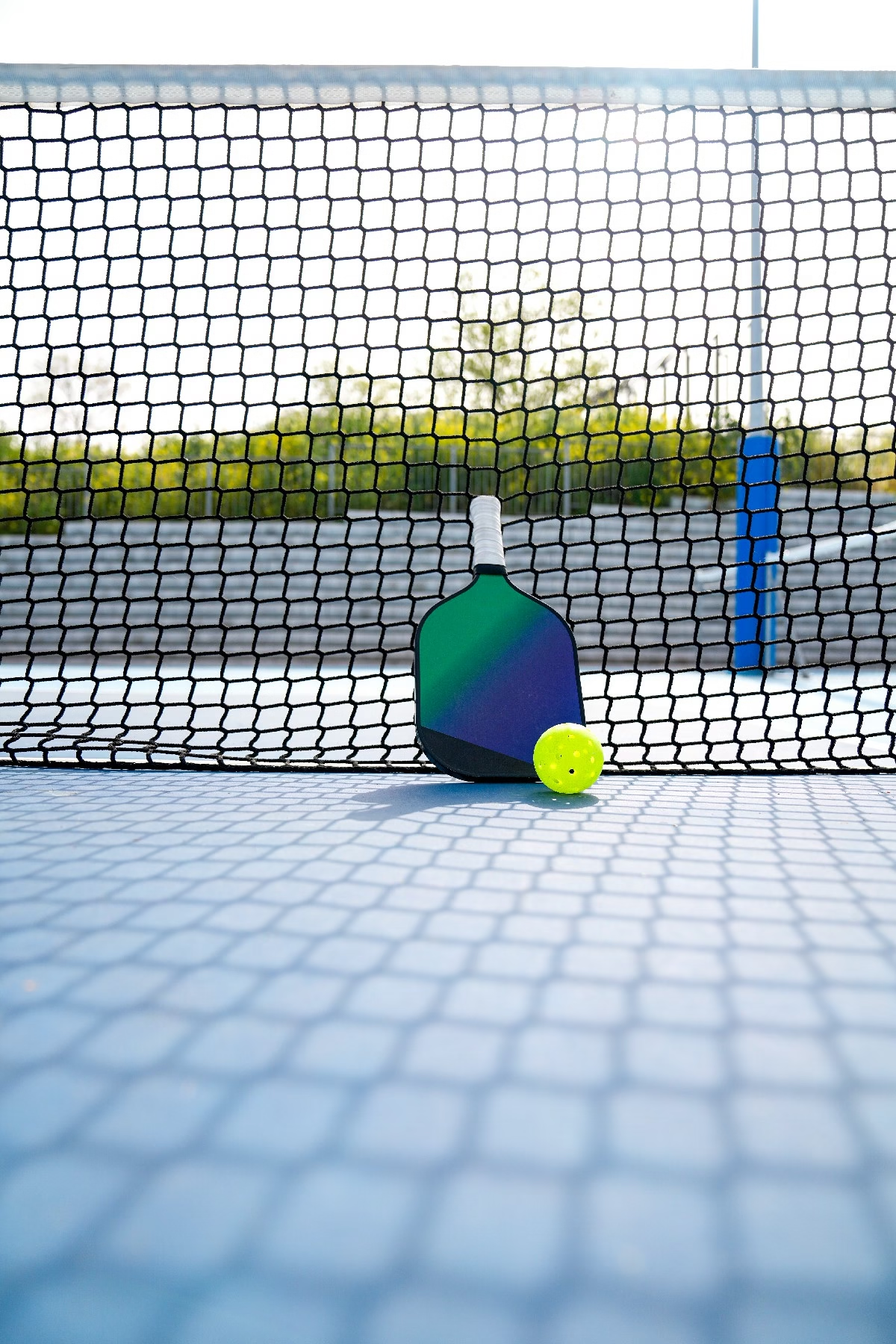
Title: The Great Paddle Debate: Is There Really a Difference in Pickleball Paddles?
In the lively world of pickleball, where quick reflexes and strategic play reign supreme, one question frequently bubbles to the surface: do the paddles we choose truly make a difference? As players flock to courts with an array of colorful paddles in hand, the subtle nuances between them can seem overwhelming. While some enthusiasts swear by the performance of their specialized gear, others argue that personal skill outweighs any technical advantage. In this exploration, we delve into the realm of pickleball paddles—examining the materials, designs, and technologies that set them apart. Join us as we dissect the features that may elevate your game, the myths that may muddle your decision, and ultimately uncover the truth behind the impact of paddle choice in the fast-paced arena of pickleball.
Table of Contents
- Exploring the Material Differences in Pickleball Paddles
- Understanding Weight and Balance for Optimal Performance
- The Impact of Paddle Shape on Play Style and Technique
- Comparing Surface Textures: Spin and Control benefits
- Choosing the Right Grip Size for Comfort and Control
- Price Versus Performance: Finding Value in Your Paddle Choice
- Q&A
- Future Outlook
Exploring the Material Differences in Pickleball Paddles
When delving into the nuances of pickleball paddles, it becomes evident that the material composition plays a crucial role in performance and player preference. Typically, paddles are constructed from a variety of materials, each contributing distinct characteristics and benefits.For instance, wood, often regarded as an entry-level material, is durable and provides a solid hit, yet lacks the finesse and responsiveness found in composite models.Conversely, composite paddles generally boast a blend of materials like fiberglass and carbon fiber, offering excellent control and power. These paddles tend to be lighter, making them easier to maneuver, especially for avid players who engage in longer matches.
A significant area of focus when discussing paddle materials is the core composition. The core affects not only the weight of the paddle but also the way it handles vibration and sound. Paddles may feature cores made of polymer, nomex, or wood.Each type of core serves a different purpose: Polymer cores are known for their soft feel and quiet play, while nomex cores provide a sturdy yet lightweight option, favoring power. To illustrate this, consider the following table that highlights the key characteristics of each core type:
| Core Material | Durability | Power | Control |
|---|---|---|---|
| Polymer | High | Moderate | Excellent |
| Nomex | Very High | High | Good |
| Wood | Moderate | Low | Fair |
Lastly, the surface material also merits attention, as it influences spin, control, and speed during gameplay. The surface is often coated with polymer, composite, or a combination thereof. Composite faces,particularly those blended with fiberglass or carbon fiber,generate a finer touch and facilitate more spin,which can be essential in competitive matches. In contrast, plastic surfaces can provide a firmer feel but may lack the spin capability. For enthusiasts seeking to enhance their game, understanding these material differences is vital in selecting a paddle that aligns with their playing style and performance goals.
Understanding Weight and balance for Optimal Performance
when it comes to pickleball paddles, weight and balance play crucial roles in determining a player’s performance on the court.The weight of a paddle can substantially affect how a player swings and controls the ball. Generally, paddles fall into three categories based on their weight:
- Lightweight: Typically weighing between 6.5 to 7.5 ounces, these paddles offer increased maneuverability, making them ideal for players who favor quick reactions and fast gameplay.
- Medium Weight: Ranging from 7.5 to 8.5 ounces, these paddles provide a balanced combination of power and control, catering to a variety of play styles.
- Heavyweight: generally over 8.5 ounces, these paddles are suitable for players looking for added force in their shots, benefiting those who employ a more powerful, aggressive style of play.
the balance of a pickleball paddle can further refine how it feels during play. Paddles can be categorized into head-heavy, balanced, and handle-heavy designs. Each balance type affects a player’s ability to swing and respond during a game:
- Head-Heavy: These paddles provide more mass at the top, offering greater power on shots but potentially sacrificing control.
- Balanced: Perfect for all-around play, balanced paddles help players maintain control while maximizing power.
- Handle-Heavy: Players who prefer finesse and quick net play may gravitate toward these paddles, as they enhance maneuverability at the cost of raw power.
| Weight Category | Typical Range | Best For |
|---|---|---|
| Lightweight | 6.5 – 7.5 oz | Quick reactions |
| Medium Weight | 7.5 – 8.5 oz | Versatile play |
| Heavyweight | Over 8.5 oz | Power hitters |
Ultimately, the optimal paddle choice will depend on a player’s unique style and preferences. By understanding the implications of weight and balance, players can select the right equipment that aligns with their game strategy, ensuring they perform at their best on the pickleball court.
the Impact of Paddle Shape on Play Style and Technique
The shape of a pickleball paddle significantly influences how players approach the game. Players must consider whether they gravitate towards a more customary rectangular shape or a more elongated design. Rectangular paddles often provide a larger sweet spot and are favored by beginners who benefit from the increased margin for error. In contrast, elongated paddles offer a unique blend of reach and control, enabling advanced players to execute precise shots with finesse.
Additionally, the paddle’s shape affects the technique used during play. For instance,those using oversized paddles typically enjoy greater power with each swing,while narrower options cater well to strategic shot placement and finesse. The choice of paddle shape can thus dictate a player’s defensive strategy, with wider paddles allowing for more robust shot responses and slender designs facilitating swift, calculated maneuvers.Each configuration enhances a player’s unique style, from aggressive baseline rallies to delicate net play.
When selecting a paddle, players frequently enough overlook the balance between comfort and efficacy. The following table summarizes some popular paddle shapes and their corresponding play styles:
| Paddle Shape | Typical Players | Play Style |
|---|---|---|
| Rectangular | Beginners | Power & Control |
| Elongated | Advanced | Precision & Reach |
| Oversized | All Levels | Defensive & Aggressive |
| Narrow | strategic Players | Finesse & Placement |
Ultimately, the choice of paddle shape can shape a player’s entire experience on the court. Understanding the nuances of how these designs affect gameplay can empower athletes to find a paddle that complements their unique play style, improving their overall performance and enjoyment of the game.
Comparing Surface textures: Spin and Control Benefits
When exploring the various pickleball paddles on the market, one of the most defining characteristics is the surface texture. Different paddle surfaces deliver unique advantages in terms of spin and control, thereby influencing your overall gameplay. Players often find themselves gravitating towards specific textures that complement their techniques—whether that be for generating spin on serves or maintaining precise ball control during volleys.
Rough Textures: paddles with a rough surface can significantly enhance ball spin. The textured finish allows for greater friction,which means when you strike the ball,you can impart a higher degree of revolution. this is particularly advantageous during top-spin shots,where the added spin can make the ball dip and curve unpredictably. You may notice the following benefits:
- Enhanced spin capabilities
- More effective serves and returns
- Increased ability to control shot placement
Smooth Textures: Smooth paddles,conversely,frequently enough favor control. These paddles provide a cleaner hit, allowing for more precision in executing your shots. Players who prioritize placement over spin may find themselves more comfortable with this type of surface, as it facilitates gentler touches and crisp volleys. The table below highlights some key differences in paddle textures:
| Texture Type | Spin Benefits | control Benefits |
|---|---|---|
| Rough | High | Moderate |
| smooth | low | High |
Ultimately, the choice between a rough or smooth paddle surface will boil down to individual playing style and preferences. While some players thrive on the ability to create sharp angles and aggressive spins, others may find success in maintaining their composure with consistent, controlled shots. Understanding these surface differences can lead to an informed decision, enhancing your performance on the court.
Choosing the Right Grip Size for Comfort and Control
When navigating the world of pickleball paddles, one of the most critical aspects is selecting the appropriate grip size. A well-fitted grip can significantly enhance your overall gameplay, offering a blend of comfort and control. If your grip is too small,your hand may cramp or tire more quickly,leading to reduced performance. Conversely, a grip that’s too large may cause your paddle to slip or make it arduous to control precise shots. The right fit allows you to generate power with ease while maintaining optimal court control.
To find the grip size that best suits your needs, consider the following factors:
- Finger Span: Measure from the tip of your ring finger to the second crease.This will provide a rough estimate of the grip size you should be using.
- Comfort Level: Hold the paddle and ensure your fingers comfortably wrap around the grip without excessive pressure.
- Playing Style: Consider your preferred playing style – a looser grip may suit aggressive, power-driven players, while a slightly tighter grip may benefit those who prioritize finesse.
For a clearer understanding, you might find the following table helpful, detailing common grip sizes and corresponding measurements:
| Grip Size | Measurement (inches) |
|---|---|
| Small | 4” – 4 1/8” |
| Medium | 4 1/8” – 4 3/8” |
| Large | 4 3/8” – 4 5/8” |
Ultimately, the right grip size is subjective and can vary based on individual preferences, hand sizes, and playing styles. Taking the time to choose the right grip can enhance your pickleball experience, allowing you to focus on strategy and execution without the distractions of discomfort. Experimenting with different sizes over practice sessions is advisable to find the perfect balance that works for your game.
Price versus Performance: Finding Value in Your paddle Choice
When diving into the world of pickleball paddles, you’ll quickly find that the relationship between price and performance is not always linear. Higher-priced paddles frequently enough come with advanced materials and innovative designs that promise improved playability and durability, yet it’s essential to weigh these benefits against your personal skill level and playing style. As an example, a beginner may find that a mid-range paddle offers ample performance without the hefty price tag of elite models. As a rule of thumb,consider what feels comfortable in your hand and how it complements your playing technique.
Hear are some factors to consider when assessing value:
- Material: Graphite and composite paddles tend to be pricier but can enhance ball control and power.
- Weight: Heavier paddles provide stability, while lighter ones allow for faster reactions and maneuverability.
- Grip size: Ensuring a proper grip can improve comfort and reduce the risk of injury.
| Price Range | Typical Features | Best For |
|---|---|---|
| Under $50 | Basic materials, larger sweet spot | Beginners |
| $50 – $100 | Enhanced grip, lightweight composites | Intermediate players |
| Above $100 | Advanced technology, professional-level performance | advanced players |
Ultimately, finding the right balance between price and performance requires looking beyond the label. Take the time to test out various paddles and listen to recommendations from fellow players. Investing in a paddle that matches your abilities and preferences can lead to not only better performance on the court but also greater enjoyment of the game.As you explore your options, remember that the best paddle for you is one that feels right, both in terms of playability and price.
Q&A
Is There Really a Difference in Pickleball Paddles?
Q: Why are there so many types of pickleball paddles?
A: Just like there are different models of cars suited for various driving styles, pickleball paddles come in many varieties tailored to different player preferences, playing styles, and levels of experience. Manufacturers craft paddles with unique materials, weights, shapes, and grips, allowing players to find one that feels just right for them.
Q: What materials are pickleball paddles made from, and how do they affect performance?
A: Pickleball paddles typically fall into three main categories—wood, composite, and graphite.Wooden paddles are sturdy and affordable, making them great for beginners. Composite paddles tend to offer a balance of power and control, using a mix of materials that can include plastic, fiberglass, and aluminum cores. Graphite paddles are lightweight and provide remarkable feel and touch, favored by more advanced players looking for precision in their shots.
Q: Do the weight and grip size of a paddle really impact gameplay?
A: Absolutely! The weight of a paddle plays a crucial role in how players handle shots. Lighter paddles (usually around 6-7.5 ounces) allow for quicker maneuverability and faster reactions, perfect for net play. Heavier paddles provide more power with each stroke, aiding players who rely on strong drives. Meanwhile, grip size affects comfort and control; having a grip that fits your hand well can prevent injuries and improve performance.
Q: Are more expensive paddles worth the investment?
A: while it can be tempting to think higher prices equate to better performance, it really comes down to the player’s individual needs. A pricier paddle might offer advanced materials for serious players, but a lower-cost option might suit a casual player equally well. Ultimately, it’s critically important to choose a paddle that matches your skill level and style of play rather than solely focusing on the price tag.
Q: How can a player determine the best paddle for their style?
A: The best way to find the ideal paddle is through experimentation. Many sporting goods stores and local pickleball clubs offer paddle demos or rentals, allowing players to try out different styles before committing to a purchase. Pay attention to how the paddle feels in your hand, how it impacts your control over the ball, and how it complements your unique style of play.
Q: Can beginner players benefit from using specialized paddles?
A: Yes and no! While beginners should focus on gaining skills and enjoying the game, using a paddle that feels comfortable can enhance their experience. A lightweight composite paddle may help a new player develop confidence as they learn different strokes. However, it’s important not to overthink—starting with a basic paddle can effectively lay a solid foundation before upgrading.
Q: is there a consensus on the “best” pickleball paddle?
A: Much like choosing the best pizza topping, what is considered the “best” paddle is subjective. Players frequently enough have personal favorites based on their playing style and comfort. It’s advisable to seek recommendations from peers and read reviews, but ultimately, the best paddle is one that makes you feel most in control and helps you enjoy the game to its fullest.
Q: How do different paddle shapes influence game play?
A: Paddle shapes vary considerably, influencing both surface area and sweet spots. Wider paddles often provide a larger hitting surface, which can boost beginner confidence by reducing the chance of missing the ball. Meanwhile, elongated paddles, which are more popular among advanced players, produce a thinner grip and potentially offer greater reach on shots, making them ideal for precise plays.
the world of pickleball paddles is as diverse as its players. While there are essential differences that can impact performance, continually experimenting and finding what resonates with you is the key to enjoying this dynamic sport. So,grab a paddle and discover the nuances for yourself!
Future Outlook
the world of pickleball paddles is as diverse as the players who wield them. While it may appear at first glance that any paddle woudl do, a deeper dive reveals nuanced differences that can significantly alter your game experience. From materials and weight to grip size and design, each element plays a crucial role in both performance and comfort. Whether you’re a seasoned pro or just dipping your toes into the sport, understanding these distinctions can empower you to make informed choices that enhance your play. So,the next time you step onto the court,consider what paddle best reflects your style and skill level. After all, it’s not just about playing the game; it’s about enjoying every moment on the court. Happy pickleballing!

